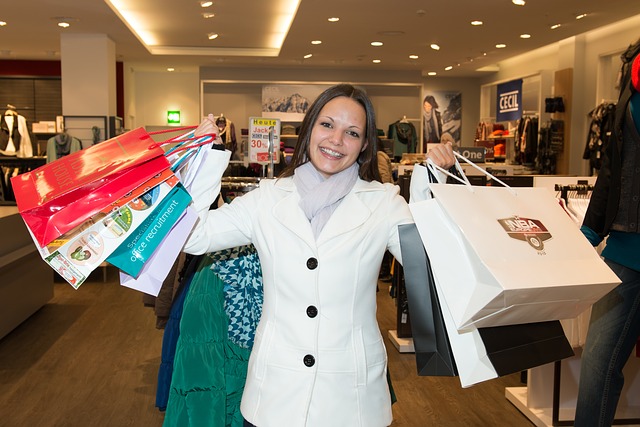“Spending makes me feel better!” Here’s a sentence spoken by so many of us, but is it true? Joining me on this journey of discovery is Patricia Huddleston, award winning professor and co-author of ‘Consumer Behavior: Women & Shopping’, a publication in collaboration with Stella Minahan.
According to Macmillandictionary.com; retail therapy is defined as an activity of shopping, in order to make one feel better! It was first cited in an article written by Mary T. Schmich publicized in December’s edition of the Chicago Tribune. In her article, A Stopwatch on Shopping, Schmich states “We’ve become a nation measuring out our lives in shopping bags and nursing our psychic ills to retail therapy”. In that case, is it fair to assume shopping can give away their characteristics whilst comforting our psyche at the same time – maybe?
Huddleston uses a theory established by O’Guinin and Faber in 1989 to describe the characteristics of a shopaholic. “Compulsive shoppers have chronic loss of impulse control; they buy, not only to get the product but also alleviate a negative mood…Just like an alcoholic needs to drink to avoid Delirium Tremens Syndrome (DTS), a compulsive buyer constantly needs to buy to feel better.” She says.
Do we, as the consumer feel comfort when we’re spending? Well, not necessarily. According to research composed by R. Pereira and Burson in 2012, there are two factors deserve a second look. It states the following; “shopping and spending money gives a sense of control over one’s life, furthermore…the ability to choose among different options is ‘healing’ for consumers.” Huddleston agrees with this thought process when she says; “It’s not spending money per se, but the act of shopping and choosing.”
Whether, you’d consider the following an assumption or a generalization. One would usually assume excessive or compulsive shopping as the ultimate remedy for anti-depression and anti-stress. I’m not suggesting this is the case for everyone it’s not. Her project in collaboration with Minahan, ‘Consumer Behavior: Women & Shopping led to an interesting discovery. Their research helped to identify two components, which serves a valid purpose for happiness when shopping. They found, a good price tag or a one of a kind product often results with a sense of accomplishment for most women. If you’re looking for another reason to be happy, here’s one. A shopping buddy is the answer, because two heads are always better than one.
I think it’s time for us to pay some attention to online shopping, and its relationship with retail. Before one click shopping became the norm. We had socialised with our buddies on a day out and debating what to buy and what not to buy. As technology changed, so did we. Online shopping offered the consumer a new window of opportunities, whilst replacing existing ones. People could shop till their heart’s content with a touch of a button. Huddleston speculates the ‘buzz’ that we get from one click shopping is completely different to physically walking into a store. “For one thing, shopping online is usually a solitary activity, while shopping in a brick and mortar store has some social aspect to it. At the very least, a shopper interacts during the checkout process.” She goes on to suggest; “ Shopping in a brick and mortar store exposes consumers to different environmental cues designed to brighten the pleasure of the experience e.g. music, scents. The online shopper would not be exposed to these cues.”
Whether you’re shopping online or physically in a store, there’s one factor that carries significance; eye catching price tags. This is applicable for both platforms. Sale signs and banners strategically covering empty spots on windows; let alone the mix and match of products, that look pleasing to the eye. It’s ultimately the technique that’s used by retailers and the online market to encourage consumer to buy, buy, and buy!
Huddleston says men are less likely to engage in retail therapy on the basis of functionality. “In general, men’s shopping goals tend to be more functional (utilitarian) than women’s. In other words, men shop to acquire products, not necessarily because they enjoy the act of shopping. Therefore, it is less likely that men will engage in shopping as retail therapy.”
I would like to conclude this article by identifying three signs that indicates you’re a shopaholic. Based on O’Guinin and Faber’s research conducted in 1989.
- You cannot stop buying, regardless of your financial situation.
- Your enjoyment from a purchase quickly evaporates.
- You feel guilty and anxious about your purchases.
My final words on the subject; “buy with responsibility and don’t burn a hole in your wallet!”

Be the first to comment on "Retail Relapse Or Pick Pocketed: The Chronicles Of Shopping"